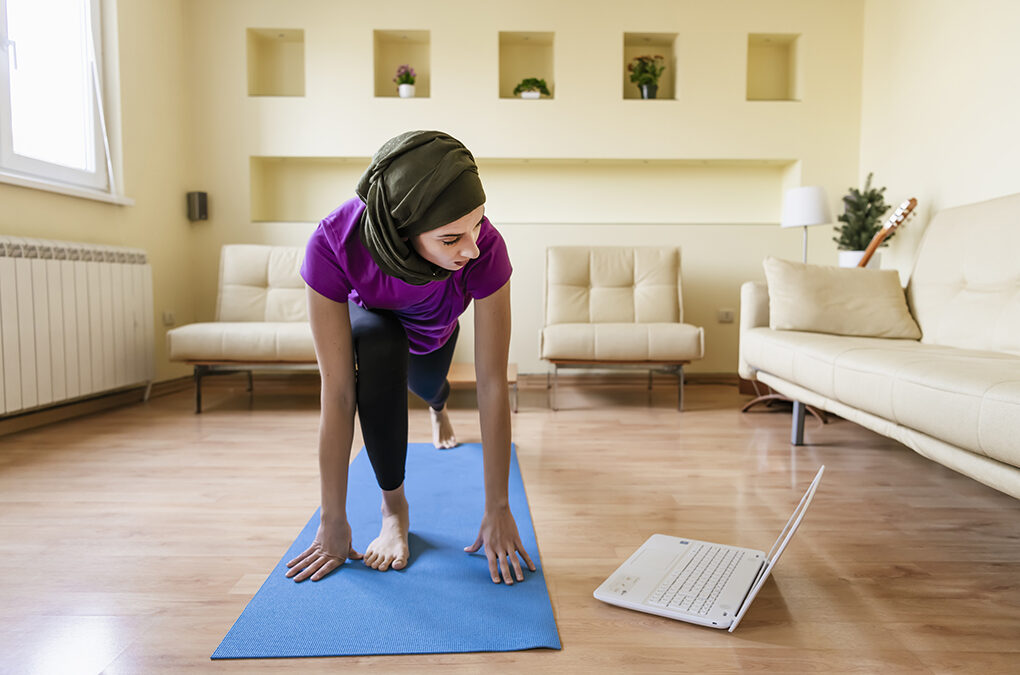Last week, I spoke about how the pandemic has caused widespread feelings of isolation, loneliness and boredom for many people, which I predict will be amplified over the coming winter period with the darker, shorter days and poor weather. I offered some ideas to help you feel more connected and inspired, which you can read here.
Another problem is the general reduction in daily movement and physical exercise due to working from home. Again, because of the change in season, I feel this will also become more of an issue.
Most people have naturally become more sedentary simply because they’re not commuting, there’s also no need to go out to get lunch, people aren’t walking around an office anymore and gyms were/are closed.
All of those seemingly small moments of daily movement add up.
You probably didn’t realise how much movement you were doing before because it was just a normal part of your daily routine but over time your body will start to notice if you’re barely moving!
Now, when working from home, many people simply get up, get ready, sit down at their desks and stay there for the whole day … aside from loo, coffee and lunch breaks … Unless, of course, they are being intentional about their movement!
And this is really the key point to all of the advice I’m sharing around ‘preparing for this Winter’; it’s that you need to be proactive and intentional in looking after your wellbeing.
Otherwise, when left to our own devices, we humans usually take the comfortable, easy option. Or we wait for when we ‘have time’ or ‘feel like’ doing something — and I can tell you, if you do that, it’s very rare you’ll ever have the time or feel like it! So, we must create some kind of routine and cultivate the self-will to follow it! As always, my goal is to give you tips, tools and advice that is realistic and doable.
With that in mind, here are some quick and easy things you can do to stay active while working from home:
Bursts of exercise
Make the most of your stairs, garden or even your block/street: for example, whilst waiting for your kettle to boil or in between meetings, take a few minutes to go up and down the stairs a few times, stepping up two stairs at a time to increase the intensity. Take a brisk walk or light jog around your garden or your block. If you want to go a step further, you could even do some whole-body weight moves during your breaks; push-ups, lunges, the plank, squats etc. All of these could be done in micro-moments throughout the day, but over time will create long-term results.
Standing desk
The ideal option would be to invest in a proper standing desk that moves up and down for flexibility. However, you can also buy a desk extender or at the least, prop your laptop up on some books. Also, remember you don’t have to stand all day, start off small committing to a couple of hours and build from there. By standing, you are using more muscles and energy. Just make sure you are standing tall with an even stance.
Walking calls
One complaint I’m hearing from so many people is the amount of time they’re spending on video calls. Whilst I do believe that oftentimes video calls are better for communication and connection, I highly recommend reviewing your meetings in advance and looking at whether any of them could be done as a phone call so that you can go out for a walk while on the call. Ideally, clear this with your line manager or the other person beforehand, but in doing so you may also encourage others to do the same!
Fictional commute
I suggested the fictional commute in a recent post, as a way to create some separation between work and home, but of course, it also gets you moving! You can read that post here: The Benefits of a Fictional Commute When You Work From Home
Stretch routine
Many people assume that stretching is just something that feels nice or is a way to warm up and cool down when exercising. Yet, if you look at animals, they always stretch before and after they’ve been inactive and really, we should too! There are many benefits to stretching for the physical body: releasing tension in the muscles, correcting posture and alignment, and keeping your body agile and limber. But there are also mental and emotional benefits: stretching releases stress hormones, toxins and emotions stored as chemicals in the body that can accumulate.
Express workouts
Lots of people have the belief that a ‘proper’ workout must be really hard and around 45-60mins. Anything less, and it’s not worth it! But as a result of this, I find many people therefore don’t do anything at all, whereas actually, anything is better than nothing! If you did just 5 minutes a day of some kind of exercise that would still make a difference in the short and long term. I advise people to do just 10-15 minutes a day focusing on a different body part or do whole body weight moves for the most effective use of the time.
Livestreams/Zoom Classes
Lastly, so many fitness brands have pivoted to offer classes or private training online. From on-demand libraries, to live video classes or private training sessions where instructors can correct you via the video. The reason I’m suggesting live online classes is that you’re more likely to commit and attend the class if you’ve paid upfront and know you need to be online at the designated time. This therefore requires less planning and discipline than a self-motivated workout.
As always, I recommend you pick one of these ideas and keep it up until it becomes a habit, then add in another.
Next week we’ll be looking at how food and nutrition play a key role in your immunity, energy and focus levels — especially important when there’s a tendency in Winter to comfort eat!
Kate x


